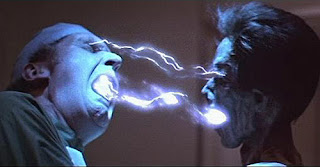Finally! I had been meaning to watch this for years and never got around to it for reasons that are still unclear to me; I mean I bought it over two years ago and waited until now to watch it in its entirety. So much movies to watch I guess. Although The Long Goodbye is easily one of those that makes you want to slap yourself in the face for waiting this long to see it; especially if you're an Altman fan. And a Chandler fan. Perhaps one of the reasons I waited was to be able to read to book first, which I did a few months ago. This little detail made the film that more enjoyable to watch, always fun to observe the differences that exist between both mediums. Incidentally, no bigger gap existst between source and adaptation then it does for the ending, which inevitably affects the evolution of Philip Marlowe (Elliot Gould) and therefore the narrative's thematic concerns. All of this falls in line with Altman's presumed goal of deconstructing the typical private-eye film. In selecting Chandler's Marlowe, arguably litterature's most famous private dick, as his main protagonist, Altman acknowledges audiences' expectations with a the simple purpose of destroying them. Right from the start, the sharp, quick-talking Marlowe is turned into a smart-ass slob who can't even manage to feed his cat. The investigation in question seems to hover only in the background, the film's essence coming from the relationships between the various characters which are brough to life by a string of memorable performances, including Sterling Hayden's loud and imposing Roger Wade. Mark Rydell is also noteworthy, his funny yet threatening portrayal of persistent crime boss Augustine one of the film's hightlights (and the source of the film's unexpected scene of brutal violence).
Stylistically, Long Goodbye is emblematic of Altman's strongest trademarks, including the extensive use of overlapping off-screen sound and moving camera that endows the films with its steady, unflinching rythm, something always present to be seen with a wandering eye. As funny as it is reflective, The Long Goodbye is unique, unprecedented and unequaled in the private eye genre.


